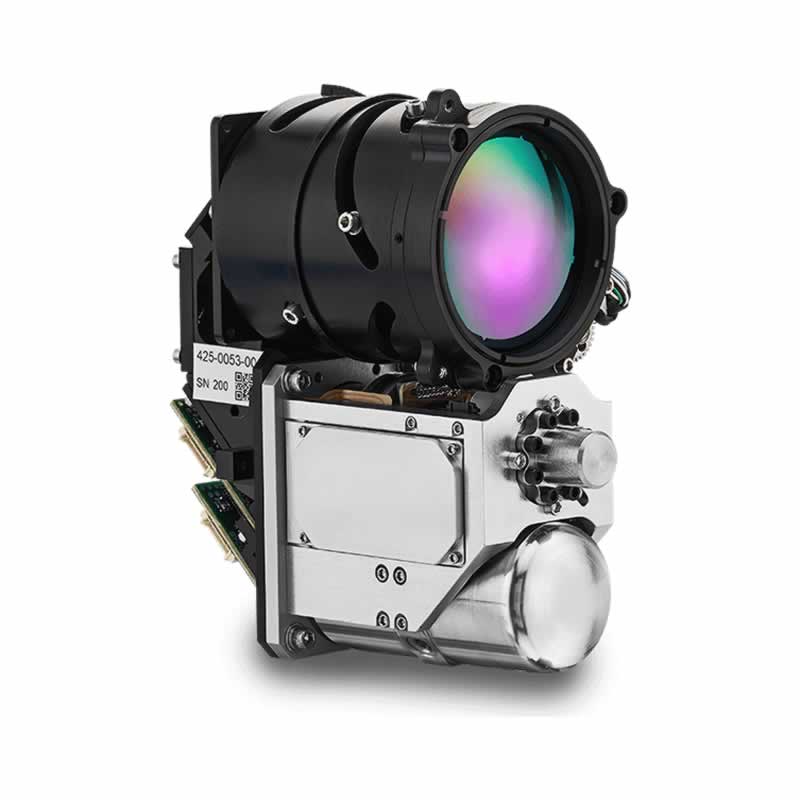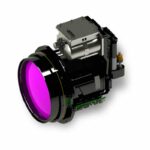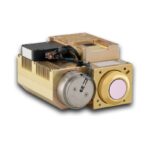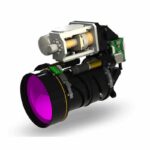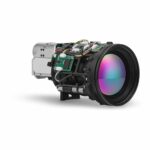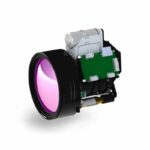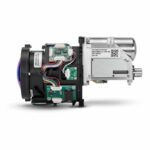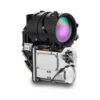Teledyne FLIR Neutrino LC – CZF 25-250 HOT MWIR Camera Module + Continuous Zoom Lens
- Dimensions: 4.5 x 2.7 x 4.7 in (11.4 x 6.9 x 11.7 cm)
- Weight: 749 grams
- EFL Zoom Range: 25 to 250 mm
- Digital Video Display Format: 640 x 512
- Full Frame Rate: 60 Hz, adjustable 1Hz to 60 Hz
- HFoV: 2.2° to 21.7°
- aperture: f/5.5
- Spectral Band: 3.4 – 5.1µm standard
Neutrino LC – CZF 25-250
HOT MWIR Camera Module + Continuous Zoom Lens
Neutrino IS series combines Teledyne FLIR’s world-class mid-wavelength infrared (MWIR) OEM camera modules and continuous zoom (CZ) lenses to offer high–performance imaging solutions with various FPA resolutions and CZ zoom/FOV ranges. Neutrino IS lowers development and manufacturing risk and improves time-to-market. Cutting-edge HOT FPAs, long life and low vibration linear coolers, common camera interfaces, and fully athermalized lenses make for the best-in-class solution. Each camera module and lens are designed for each other, providing optimal performance not achievable when buying and integrating cameras and lenses from multiple sources.
Teledyne FLIR Neutrino IS series is simply the best technical solution available. With nearly off-the-shelf delivery, industry-leading two-year warranty, real price competitiveness and well-known product support and product reliability, it offers the lowest risk solution. The Neutrino IS is an OEM camera module that is intended to be integrated into a higher level system.
Superior Performance, Faster Time to Market
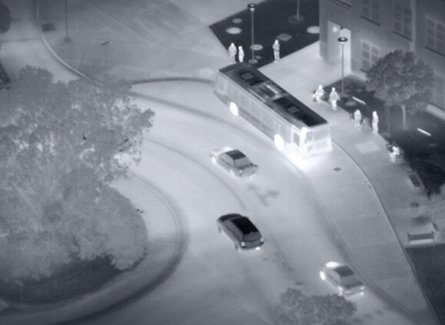
SWAP+C OPTIMIZED SENSOR ENGINE
SWaP+C optimized design saves space, weight, and power, resulting in operational and cost benefits and the ability to integrate into smaller spaces.
- HOT MWIR Sensor Technology
- Tight optics-to-camera tolerances minimize optics size and mass
- Best-in-class power consumption

RELIABLE LINEAR COOLER
Designed from the ground up for optimum performance and reliability minimize cost of ownership and maximize operational uptime
- Increased reliability and low vibration
- 2x faster time to image
- Reduce user fatigue and operate for longer periods
- Comprehensive product documentation
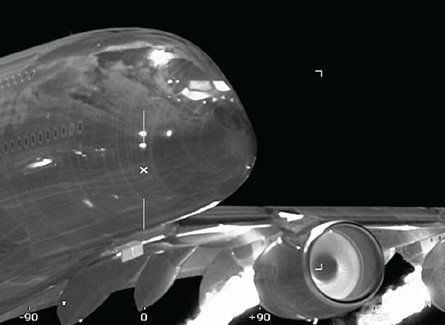
MARKET LEADING THERMAL OPTICS
Integrated SWaP optimized lens provides instant clear imaging able to withstand every rugged environment.
- Smooth continuous zoom
- Precision aligned camera and lens with a collimator and sophisticated test equipment
- Highly qualified Teledyne FLIR Technical Services team available to support integration
| Resolution | |
|---|---|
| Pixel Pitch | |
| Spectral Band | |
| Sensitivity/NEdT | |
| FPA & Digital Video Display Formats | |
| Detector Type | |
| f-number | |
| Frame Rate | |
| Image Correction |
DDE, Histogram Equalization |
| Color and Monochrome Palettes (LUTs) | |
| Continuous Zoom (digital and analog) | |
| EFL_Zoom Range [mm] | |
| Operating Temperature Range | |
| Non-Operating Temperature Range | |
| Operational Altitude | |
| Vibration | |
| Programmable Integration Time | |
| ROIC | |
| ROIC Modes | |
| CMOS (16-bit or 8-bit) |
16-bit color encoded YCbCr, 8-bit), CMOS (16-bit |
| Weight |
